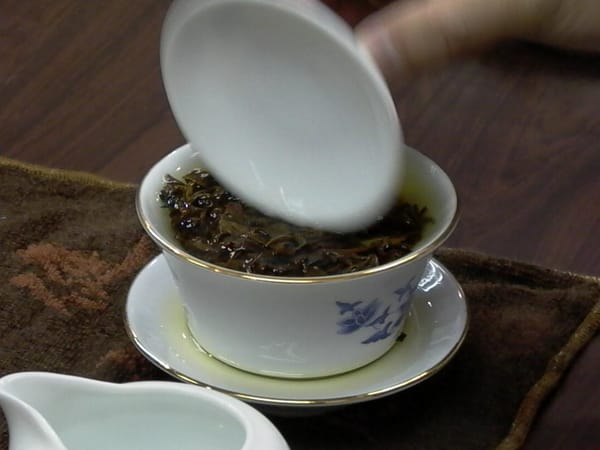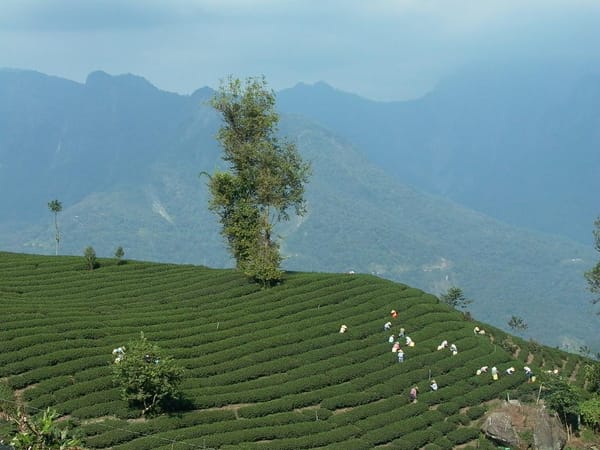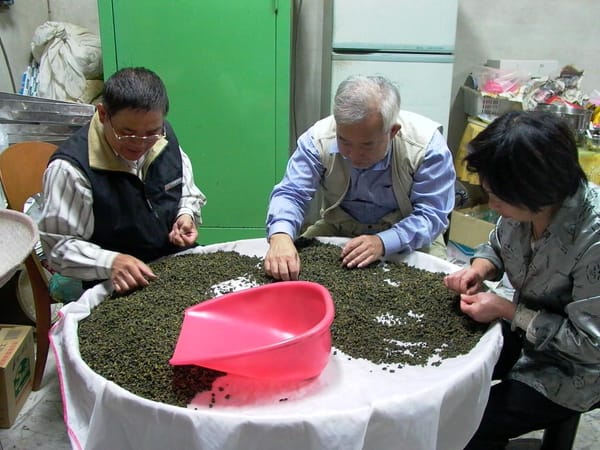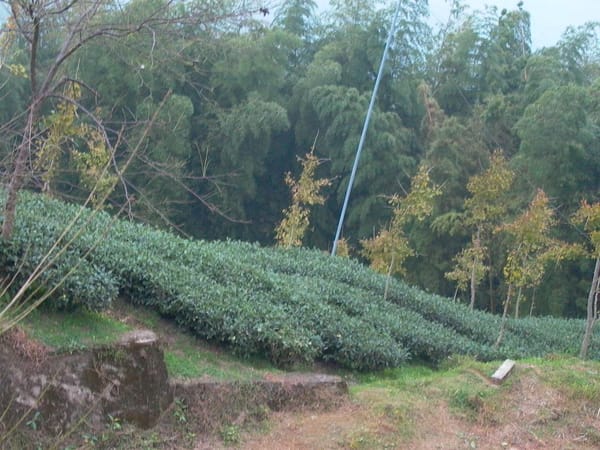When you savor a cup of fragrant Taiwanese-style tea, have you ever wondered about the precise craftsmanship behind it? From high-mountain tea gardens over a thousand meters above sea level to the amber liquor in your cup, the creation of Taiwanese-style tea blends traditional wisdom with modern technology. Every stage shapes the final flavor profile. Understanding this production process is like decoding a secret script written in tea leaves.
The production system of Taiwanese-style tea is built on five core elements: cultivar selection, shaping of the tea leaves, control of roasting degree, mastery of fermentation level, and presentation of final quality. These standards not only define the essential characteristics of Taiwanese-style tea but also serve as a benchmark for distinguishing authentic products in both Taiwan and Mainland China.
Let’s break down each key stage of Taiwanese-style tea production, from cultivar breeding to final quality presentation, and explore the refined art of tea-making.
Cultivar Selection: The Genetic Code of Taiwanese Tea
The quality of Taiwanese-style tea begins with the choice of cultivars. According to production standards, six main cultivars are used: Qingxin Oolong, Qingxin Damu, TTES No. 12 (Jin Xuan), TTES No. 13 (Cui Yu), Four Seasons Spring, and Tieguanyin. Each offers distinct flavor foundations.
Qingxin Oolong, a traditional Taiwanese cultivar, is known for its excellent storage potential and complex flavor layers. When processed with the right techniques, it delivers a rich taste with a pronounced lingering sweetness. Jin Xuan (TTES No. 12) is famous for its unique milky aroma, best showcased under light fermentation—a style highly popular in Mainland China.
From a catechin perspective, each cultivar has a different health value. Qingxin Oolong averages 12.4% catechins, Jin Xuan 12.1%, and Four Seasons Spring 12.1%. These figures influence both the health benefits and the processing potential of each tea. Farmers must balance market demand, production adaptability, and product positioning when choosing cultivars.
Tea Classification: The Unique Position of Oolong
Within the six major Chinese tea categories, Taiwanese-style tea belongs to Oolong (Qingcha). This classification determines its core processing style and quality traits. Compared with green, white, yellow, black, and red teas, Oolong is semi-fermented, retaining fresh aromas while developing depth of flavor.
Oolong processing allows moderate fermentation, during which catechins partially oxidize, producing unique aromatic compounds. Taiwanese-style tea refines this further with light fermentation (8–20% oxidation), preserving fresh vitality while enhancing floral notes.
This position gives Taiwanese-style tea a market edge. In a landscape where green tea focuses on freshness and red tea on richness, Oolong offers a refined, sweet, and aromatic experience that meets diverse consumer preferences.
Leaf Shaping: The Half-Ball Craftsmanship
The hallmark shape of Taiwanese-style tea is the half-ball, valued for both aesthetics and function. This form is achieved through precise rolling (揉捻), which not only alters appearance but also breaks leaf cell walls, aiding the release of aromatic compounds.
This half-ball rolling technique originates from traditional Dong Ding Oolong production. In Lugu Township, Nantou, master tea farmers like Zhang Shih-Rong still practice the traditional tuan-rou method, tightly curling leaves into compact semi-spheres. This shape improves storage and shipping stability, and during brewing, allows a slow release of flavor, extending infusion longevity.
In Mainland China’s market, the half-ball shape is a key visual marker of authentic Taiwanese-style tea. However, even experienced tea drinkers must evaluate aroma and taste alongside shape for accurate quality assessment.
Roasting Degree: The Philosophy of Light Roasting
Taiwanese-style tea typically uses light roasting, setting it apart from traditional heavily roasted Oolong. Roasting degree directly impacts aroma and taste—light roasting preserves the tea’s natural fragrance, aligning with modern preferences for fresh-aroma teas.
This requires expert control of temperature and time to remove raw bitterness without harming aromatic qualities. It is especially suited to cultivars like Jin Xuan, highlighting milky or floral notes.
However, light roasting shortens shelf life compared with heavier roasts. Strict storage is essential, especially for long-distance trade. This explains why Jin Xuan should be enjoyed fresh, while Qingxin Oolong can store longer.
Fermentation Degree: The Innovation of Light Fermentation
The signature of Taiwanese-style tea is light fermentation (8–20% oxidation). Mastery of this requires experience and precision—from sun-withering to indoor withering, tossing, and fixation (殺菁)—each step must be timed to perfection.
This innovation, compared with medium-fermentation methods, preserves freshness, producing a clear honey-green liquor and elegant aroma. It meets modern consumer tastes and competition judging criteria like “Green Appearance Wins.”
Shifts in competition judging—from medium fermentation for depth to light fermentation for aroma—reshaped farmer practices and market trends, influencing production even in Fujian.
Quality Certification: The Three Key Elements
Taiwanese-style tea quality assessment focuses on liquor color, aroma, and taste.
- Liquor Color: Honey-green, clear, and bright.
- Aroma: Elegant and high.
- Taste: Fresh, sweet, and smooth.
Compared to medium-fermentation Oolong’s golden liquor, Taiwanese-style tea’s honey-green hue reflects its light-fermentation profile. Aroma evaluation requires professional skills, with fragrance being a key selling point.
Taste assessment measures sweetness and smoothness, influenced by cultivar, processing, and brewing. This fresh-sweet smoothness distinguishes Taiwanese-style tea in both Taiwan and Mainland markets.
Heritage and Innovation
Taiwanese-style tea reflects a harmony of tradition and modernity. Veteran tea masters preserve core skills, while younger farmers innovate to meet market demands.
After the 921 earthquake, changes in soil structure prompted adjustments in processing, accelerating light fermentation adoption. Post-disaster modernization and equipment upgrades further standardized production.
Facing diverse market demands, producers maintain core traits while adapting for regional preferences. Differences in terroir ensure that even with the same process, each tea is unique—this diversity fuels Taiwanese-style tea’s ongoing vitality.





